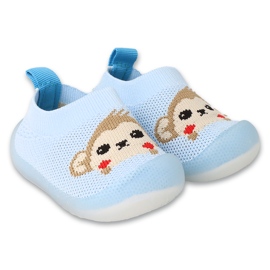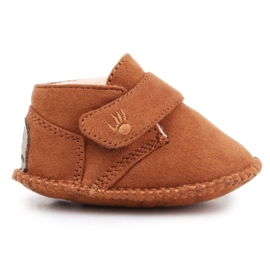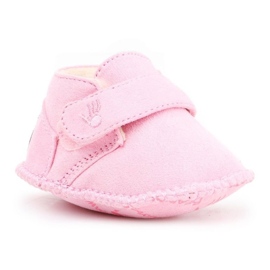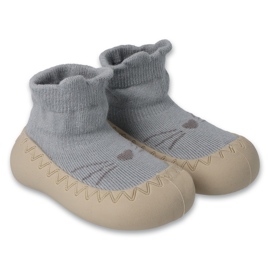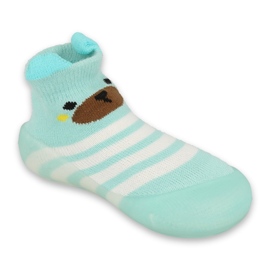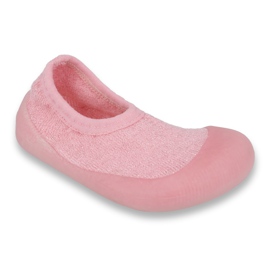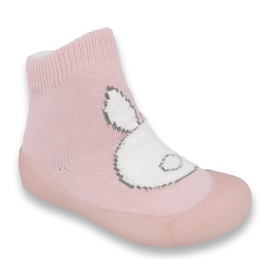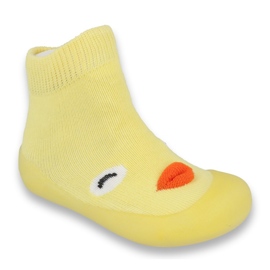Fabric footwear for babies - softness and safety in one
Why should you choose fabric footwear for babies?
Fabric footwear made of fabric is a great choice for toddlers who are just learning to take their first steps. Fabric is a natural, breathable material, which provides the child's skin with adequate ventilation and minimizes the risk of burns or irritation. The softness of the fabric makes the shoes flexible and adapt to the shape of the child's feet, providing him with comfort when walking or crawling. In addition, fabric footwear is light, which is extremely important for developing infants. The use of fabrics in the production of footwear also enables wide personalization and decoration options, which allows you to choose a model matched to both the child and parents. Natural materials are also environmentally friendly, which is an additional advantage for conscious consumers.
How to choose the right fabric footwear for babies?
Choosing the right baby footwear is an important decision that can affect the development of a child's feet. It is crucial that the shoes are properly matched, not too tight and not too loose. It is worth choosing models from natural fabrics such as cotton, linen or soft wool, which are friendly to the delicate skin of children. Pay attention to the sole - it should be flexible and non -slip to ensure stability while learning to walk. You should also pay attention to the finish and seams - avoid those that can cause abrasions. It is important that the shoes have flexible fasteners, such as elastic bands, Velcro or bonds, which allow easy putting on and taking off, and at the same time stabilize the foot well. Before buying, it is worth measuring the child's foot and choosing a size of a few millimeters larger to ensure freedom of movement.
The pros of fabric shoes for babies - why are they better?
By offering incomparable comfort and safety, infant fabric footwear has many advantages. First of all, their natural materials allow better air circulation, which is crucial for hygiene and health of the child's skin. Secondly, fabric shoes are extremely soft, which minimizes the risk of abrasions or burns on the delicate skin of infants. Their lightness means that the toddler's feet can develop and strengthen freely. Thanks to the wide selection of colors and designs, fabric footwear allows you to express the individuality of a child and facilitates the selection of stylish accessories. Importantly, taking care of hygiene is simple, because many models can be washed at home, which guarantees cleanliness and freshness of shoes every day.
Care of baby fabric footwear - how to care for shoes?
In order for fabric shoes for babies to serve as long as possible and retain their hygiene values, proper care is needed. Regular cleaning is recommended with a delicate brush and a mild detergent that will not violate the structure of the material. It is also important to dry the shoes well, avoiding direct sun and heat sources, which can cause deformation of the fabric. Washing according to the manufacturer's instructions allows you to keep the fabric in good condition and provides hygienic cleanliness. Storing footwear in a dry and clean place, in comfortable containers, helps prevent the development of mold and dust. It is also a good custom to rotate used pairs of shoes so that each of them has time to dry and regain their properties.
Children's fashion trend - fabric baby shoes in a modern edition
Fabric baby footwear is not only a functional choice, but also a fashionable accent of a children's wardrobe. Designers are increasingly reaching for natural materials that combine with modern design, creating stylish and practical products. In today's collections you can find models with minimalist forms with interesting decorations, prints and classic designs that blend in with various children's stylizations. Ecological brands are also popular, which emphasize organic fabrics and sustainable production methods. Fabric shoes for babies become a real state of children's fashion, emphasizing the concern for health, comfort and ecology, and at the same time showing that functionality with aesthetics can be combined.
